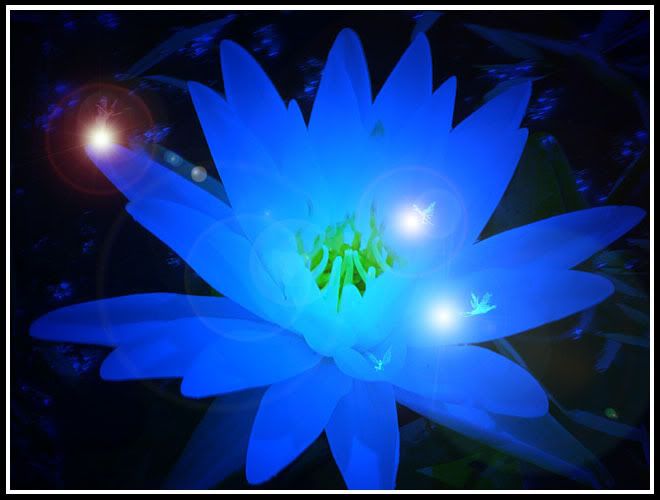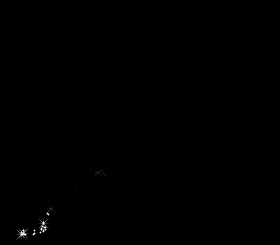by David Richo PhD -
The Jungian archetype of the Shadow includes all that we abhor about ourselves and all the wonderful potential that we doubt or deny we have.
We project these negativities onto others as strong dislike and project our positive potential as admiration. We can re-member and restore these capacities to our psyches.
We project these negativities onto others as strong dislike and project our positive potential as admiration. We can re-member and restore these capacities to our psyches.
We explore our dark side as a source of creativity and untapped potential. How does our dark side manifest, go into hiding and emerge to hurt or liberate us?
What is evil and how do we protect ourselves from it? What is the shadow in our family, relationships, religion, and in the world?
What is evil and how do we protect ourselves from it? What is the shadow in our family, relationships, religion, and in the world?
We learn ways to make friends with our shadow both positive and negative so that our lost life can be restored and renewed. Inner foes become allies; dark angles within us become archways of light.

To befriend the POSITIVE personal shadow use this triple A approach:
• Affirm that you have the quality you admire or envy in someone else. This can be a simple declaration or affirmation such as: "I am more and more courageous."
• Act as if you have that quality by making choices that demonstrate it.
• Announce it: Tell everybody you know that you are making these changes and ask for their support.
These are three steps we take. They are usually followed by shifts in our personality; we begin to act in wiser, more loving, and more healing ways with no further need for effort.
This is the grace dimension, the spiritual assistance to our work.
This is the grace dimension, the spiritual assistance to our work.

To befriend the NEGATIVE personal shadow, here are five A’s:
• Acknowledge that you have all the attributes humans can have, that you contain both sides of every human coin. Acknowledge that you have the specific negative traits you see in others that evoke a strong reaction of repulsion in you. The urge to observe coexists with its opposite impulse to expose.
• Allow yourself to hold and cradle these as parts of yourself. Acknowledge that they may have gone underground for a legitimate purpose and are now ready to be turned inside out and become something more creative and empowering in your life.
• Admit to yourself and to one other person the fact of these shadow discoveries about yourself.
• Make amends to those who may have been hurt by your denial of your own shadow: "I saw this in you and it is in me. I have blamed you for what I am ashamed of in myself." Make amends to anyone you have hurt by any underhanded ways your shadow has impacted him/her.
• Become aware of the kernel of value in your negative shadow characteristic and then treat it as you did the positive shadow above: affirm it as true of yourself, act as if it were true, announce your discovery and program to others who can assist us in following up on it.
As you do this work, do not scold yourself as a critical parent for all your deficits. Have a good talk with yourself as a kindly adult:
"I have been controlling and that is wrong of me, but there is a kernel of positive value in that controlling. It is my capacity for getting things done, for organizing, even for leadership. I will now concentrate on and release those wonderful attributes. I will find my positive shadow in my negative shadow!"

This is working with what is rather than attempting to eliminate what is, and thereby working against psychic truth. Shadow embracing reverses self-alienation and connects us to our own rainbow reality.
To see your dark side, to see what you are really up to while not shaming yourself for it reconnects you to your true self and reveals its spacious grandeur.
Such vision is a form of mindfulness. Turning against the external tyrant is useless.
Such vision is a form of mindfulness. Turning against the external tyrant is useless.
You have to see him in your own mirror: "This face is mine. I accept the fact that there is something dark in every one of my motivations. And I still see the light in me too."
Jung, toward the end of his life, wrote:
Jung, toward the end of his life, wrote:
"I am astonished, disappointed, and pleased with myself. I am depressed and rapturous. I am all this at once and cannot add up the sum."
The theme of letting go keeps appearing in our work of deflating our egos. Why do we not let go as easily as the poppy petals do when their season ends?
Why is it not automatic in us as this phrase of Rilke suggests it can be: "Make it as easy as the earth makes itself ready for spring"?
Why is it not automatic in us as this phrase of Rilke suggests it can be: "Make it as easy as the earth makes itself ready for spring"?
To ask why surrender does not happen without pain is like asking why we do not have strong muscles without working out.
It takes practice, both psychological and spiritual practice that have as their purpose to grant an unreserved assent to every human predicament we find ourselves in. The ego cannot do this; it has too many vested interests in survival based on its props of control and entitlement.
It takes practice, both psychological and spiritual practice that have as their purpose to grant an unreserved assent to every human predicament we find ourselves in. The ego cannot do this; it has too many vested interests in survival based on its props of control and entitlement.
In the past it was thought that fasting, self-flagellation, asceticism, etc., made a contribution to one’s own holiness/wholeness or to those of others.
These practices were reproved by the Buddha who saw them as life-negating. Our best offering to the world is in capitalizing on our own vast body/soul potential. What helps us toward wholeness and what helps others is the release, not the inhibiting, of our hidden reserves.
These practices were reproved by the Buddha who saw them as life-negating. Our best offering to the world is in capitalizing on our own vast body/soul potential. What helps us toward wholeness and what helps others is the release, not the inhibiting, of our hidden reserves.

This release is found especially in meditation, yoga, body-oriented therapies, dream work, and active imagination. The central purpose of these practices is the letting go of ego not the splitting of mind and body.
The mind’s subjugation of the body can be another ploy of the ego to keep us divided against the Self! Ego thrives on oppositions, so defeat of oppositions is the true letting go of ego.
The mind’s subjugation of the body can be another ploy of the ego to keep us divided against the Self! Ego thrives on oppositions, so defeat of oppositions is the true letting go of ego.
A body image is the ego’s version of our body. We confuse these two and think they are the same. Actually, our body is a marvelous tool and full of wonders unguessed at by the mind.
The ego version of the psyche does not give the complete picture of who we are either. Dreams, poetry, imagination, and projection give clues that there is more to us than ego. In body and mind we are more than we seem.
The ego version of the psyche does not give the complete picture of who we are either. Dreams, poetry, imagination, and projection give clues that there is more to us than ego. In body and mind we are more than we seem.

An intriguing metaphor for the dissolution of ego is the metamorphosis of the caterpillar. When it becomes a cocoon, it goes into dissolution, becoming a yellow, undifferentiated, gooey mass.
This is a necessary stage before it can be adorned in its splendid butterfly raiment.
This is a necessary stage before it can be adorned in its splendid butterfly raiment.
We will feel like an identity-less mess when we let go of ego. Our first reaction may then be fear and that makes us hold on more tightly to the F.A.C.E. we do not want to lose.
We fall back into the old patterns of control and combativeness. In reality, the time has come to let go of those ingrained habits and to allow dissolution.
We fall back into the old patterns of control and combativeness. In reality, the time has come to let go of those ingrained habits and to allow dissolution.
It is time to lie still, as mummies do. In fact, a mummy is a cocoon, lying quietly for as long a time as it may take for its new life to open.
Sometimes the work is to dissolve rather than solve. Letting go of ego proves to be what wants to happen in us. It is not a goal but a program already and always in place for beings like us, so infused with urgent yearnings for Buddha’s paradise beyond fear and desire.
Sometimes the work is to dissolve rather than solve. Letting go of ego proves to be what wants to happen in us. It is not a goal but a program already and always in place for beings like us, so infused with urgent yearnings for Buddha’s paradise beyond fear and desire.
excerpt from 'Shadow Dance: Liberating the Power and Creativity of Your Dark Side'
About Author: David Richo, Ph.D., M.F.T., is a psychotherapist, teacher and writer in Santa Barbara and San Francisco California who emphasizes Jungian, transpersonal, and spiritual perspectives in his work. He is the author of: How To Be An Adult, When Love Meets Fear, Unexpected Miracles: The Gift of Synchronicity and How to Open It, Shadow Dance: Liberating the Power and Creativity of Your Dark Side and Catholic Means Universal: Integrating Spirituality and Religion.



No comments:
Post a Comment